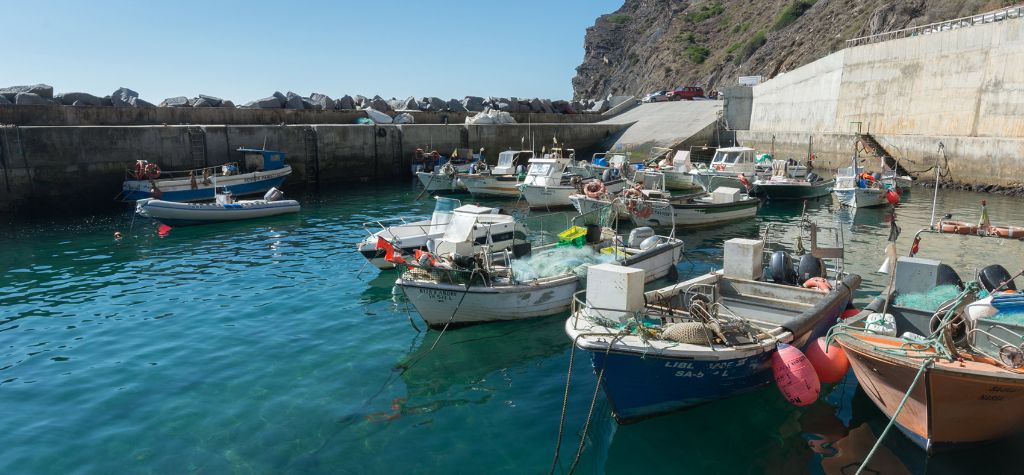A safe harbour
In the extreme northwest of the Algarve coast, between Carrapateira and Odeceixe, we can find Arrifana, a safe port, sheltered from the north winds.
There are traces of human presence in this area since the time of Epipaleolithic communities of fishermen and gatherers (9–8 millennia b.C.). On the other hand, the mythical Muslim military monastery, the Arrifana Ribat (Al-Rihana), was located here.
Later, in the Christian period, the fortress of Arrifana (17th century) was built to protect the coast and the tuna trap (assembled during summer months); its ruins still remain and from this viewpoint it is possible to admire the coast in all ist splendour. The protection provided by cannons had managed to discourage Moorish pirates. They south not just for food, water supplies and the loot of treasures or religious artefacts, but they also aimed to capture people and boats. In the 20th century, a ramp was built, being followed by the small fishing harbour in order to better accommodate the village’s fishing community.
Arrifana is also a landmark for surf and one of the first surfing beaches in Portugal. Here, ocean waves are known for their perfection when together with moderate seaward winds they reach one to four meters high.
The village is located inside the Natural Park of Southwestern Alentejo and the Vicentina Coast. It holds one of the few marine protected areas of the Algarve, including the sharp and stark Pedra da Agulha (southward of the bay), Pedra da Carraça and the coastal area between the fortress of Arrifana and Ponta da Atalaia. Forests of kelp (leafy brown algae locally known as golfes) distinguish the sea bed of this protected area; clinging to reefs, they provide shelter to a large number of marine species.
At Portinho da Arrifana, 18 boats operate with a companha of 25 active fishermen. This still represents a very strong community when comparing with the 2000 figures: about 23 boats and 40 registered fishermen, not necessarily all active.
The main fishing gears are: gill nets for sea bream, sea bass and sole; trammel nets for soles, skate and turbot; pots for octopus. Long lines are not so often used. Yet they are highly efficient while capturing sea bream and sea bass, which are landed still alive and kicking. The final highlight is the extremely sougth and disputed barnacle harvest.
The fishermen’s association of “Portinho da Arrifana and the Vicentina Coast” manages the points of sale, providing help with weighing, storage, cold preservation and fish transportation to Sagres market. The more pressing needs of this community are the ramp and pier improvement.
Gastronomy
Typical dishes of the fishing community are: steamed octopus in olive oil, fish stew (caldeirada), fried moray eel, the famous barnacles, octopus with sweet potato (from Rogil or from the floodplains of Aljezur).
Festivities
On the last Saturday of July, the Fisherman’s Festival takes place, observing the traditional seawards procession and grilled sardines on land. Nowadays, a new tradition joins the old one. Already famous, the Arrifana Sunset Festival takes place at the small harbour, one day after the fishermen’s day.
Must-Visit
Arrifana Fortress, Aljezur Castle, Aljezur Museum, Igreja Nova, Arrifana cliffs (Ponta da Atalaia), Praia do Monte Clérigo, Praia da Amoreira, Praia de Vale dos Homens, Praia de Pipa, Praia da Carriagem, Praia de Odeceixe, donkey or horse riding, surf and bodyboard, water sports.


